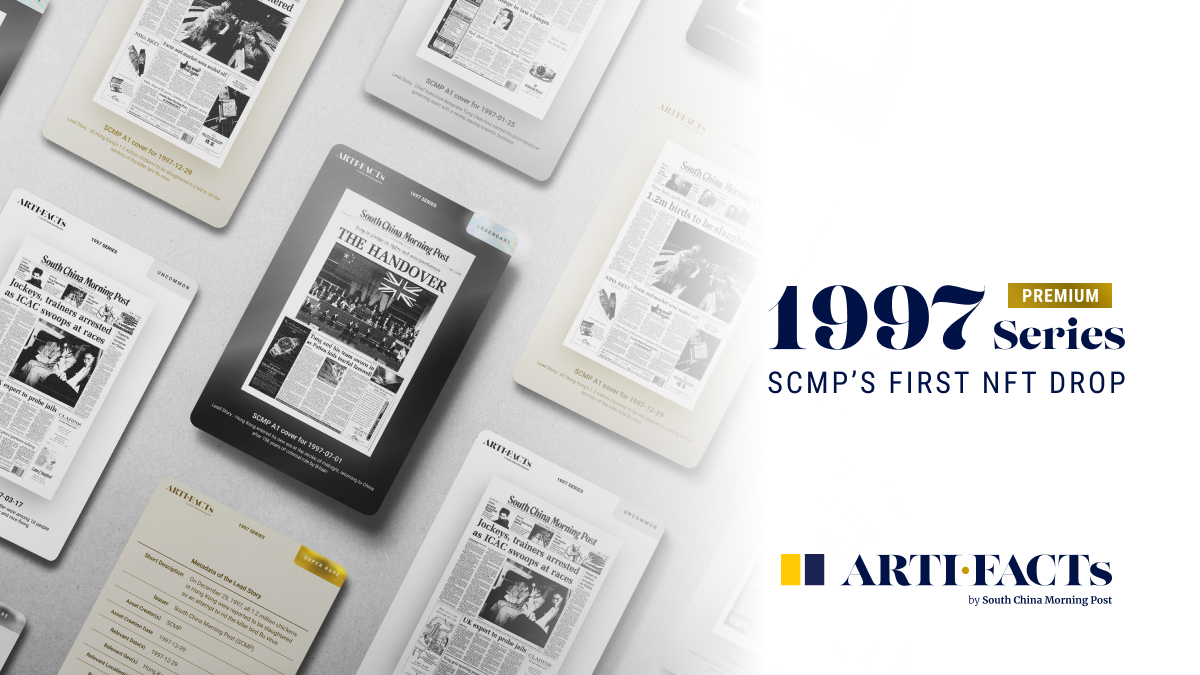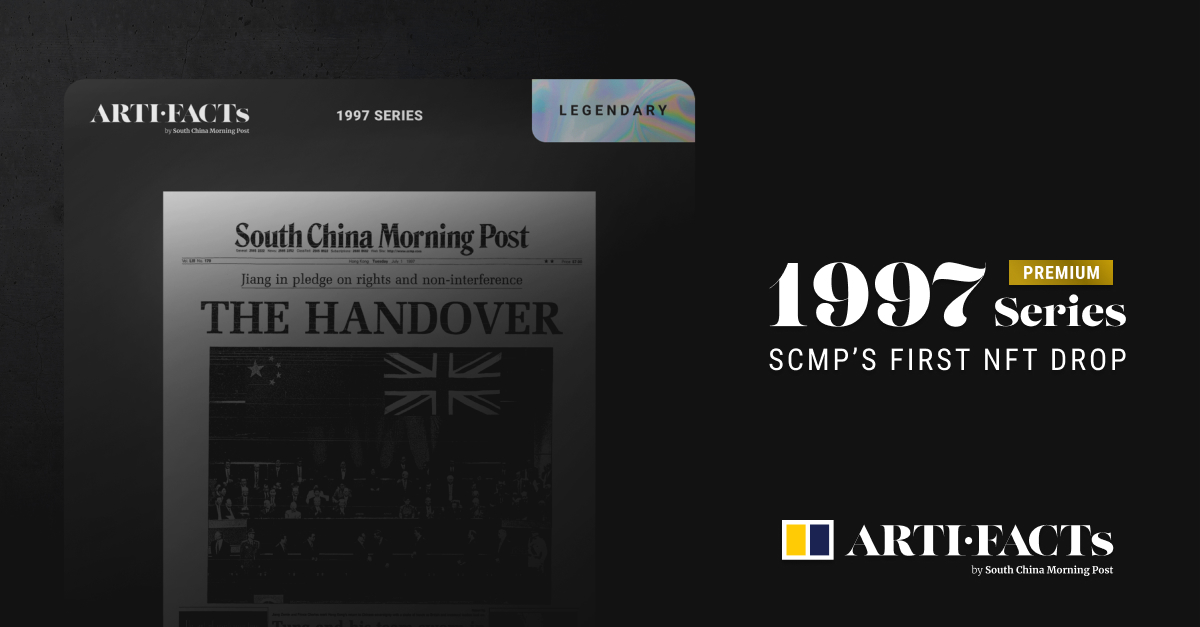South China Morning Post invents new NFT standard for historical assets

Supplied
The leading English-language Hong Kong newspaper has just sold a piece of its history — and made some of it, too.
The South China Morning Post and a council of experts designed a new type of NFT for the drop of the newspaper’s front pages from the first half of 1997, the year that Hong Kong was handed back to China.
The “ARTIFACT” NFT standard is designed for historical assets, with metadata that lists their heritage and provenance to establish their historical significance and value, as well as enhance their discoverability on NFT marketplaces.
The SCMP says ARTIFACT was designed by a council of cross-discipline experts including institutions in art, culture, media, research and technology. The NFTs can be used to represent anything from single news stories to audio clips to front pages.
“As a news organisation with 118 years of history, SCMP believes that factual accounts of history and authentic historical assets should be immutable, and that ownership of these digitised and tokenised assets (which are part of our collective human experience) should be decentralised,” the SCMP says.
“Our vision is that all ‘guardians of history’ will digitise and tokenise their assets as ARTIFACTs. This includes media publishers, museums, academic institutions, think tanks, cultural organisations, art galleries, auction houses, archivists, governments, and others.”
The SCMP says its physical archives are slowly degrading “regardless of how much effort we put into preservation” and even its digital archives are only available to a few select academics.
“We believe there is incredible value in these archives, yet to be expressed because no technology has existed before NFTs that can preserve immutably, scale infinitely, transact transparently, and value objectively a ledger of history,” the newspaper says in the ARTIFACT whitepaper.
“By tokenising our archives into ARTIFACTs, we will be able to achieve such objectives and therefore enable everyone to discover, connect, and collect moments in history.”
1997 front pages sold
This week’s token sale involved 1,300 “unique mystery boxes” each containing five ARTIFACT NFTs representing front pages from the period from January 1, 1997, to July 1, 1997.
The boxes cost US$97 in FUSD, a US dollar stablecoin on the Flow blockchain.
“We are delighted with the response to our first NFT launch, which illustrates the enthusiasm for preserving history on the blockchain,” said SCMP chief executive Gary Liu.
“It is an encouraging start and we will build on this momentum around historical NFTs to grow and serve a global community of collectors.”
Hong Kong is marking the 25th anniversary of the handover this year. Also occurring in 1997 were such historic events as a financial crisis in East and Southeast Asia, the deaths of Deng Xiaoping and Princess Diana, and an outbreak of avian flu in Hong Kong.
“SCMP has witnessed many historic moments as Hong Kong’s newspaper of record,” Liu said. “We look forward to releasing more of the Post’s 118-year-old media archives as NFTs as well as partnering with other guardians of history to preserve historical assets on the blockchain.”
The NFTs should be tradeable soon on the secondary marketplace Rarible and Bloctobay, and the SCMP has its own plans to launch an Arifact marketplace later this year.
There’ll be another drop next month of 1,300 boxes containing front pages from the second half of the year.
Each front page was given a rarity based on its historical value. For example, the front page for June 27, 1997, was merely deemed “uncommon” and 50 NFTs were minted. But the page for July 1 – the date of the handover – was considered “legendary” and represented by just a single NFT.

SCMP partnered with Blocto, a cross-chain smart contract wallet, for the drop.
“Blocto has a lot of experience in the deep blockchain having cooperated with large enterprises, from Vault by CNN, MotoGP Ignition and the South China Morning Post,” said Hsuan Lee, chief executive of portto, the company behind Blocto.
“We have been continuously focusing on co-creating an easy-to-use experience that is intuitive to both users and the companies we work with.”
Related Topics
UNLOCK INSIGHTS
Discover the untold stories of emerging ASX stocks.
Daily news and expert analysis, it's free to subscribe.
By proceeding, you confirm you understand that we handle personal information in accordance with our Privacy Policy.








